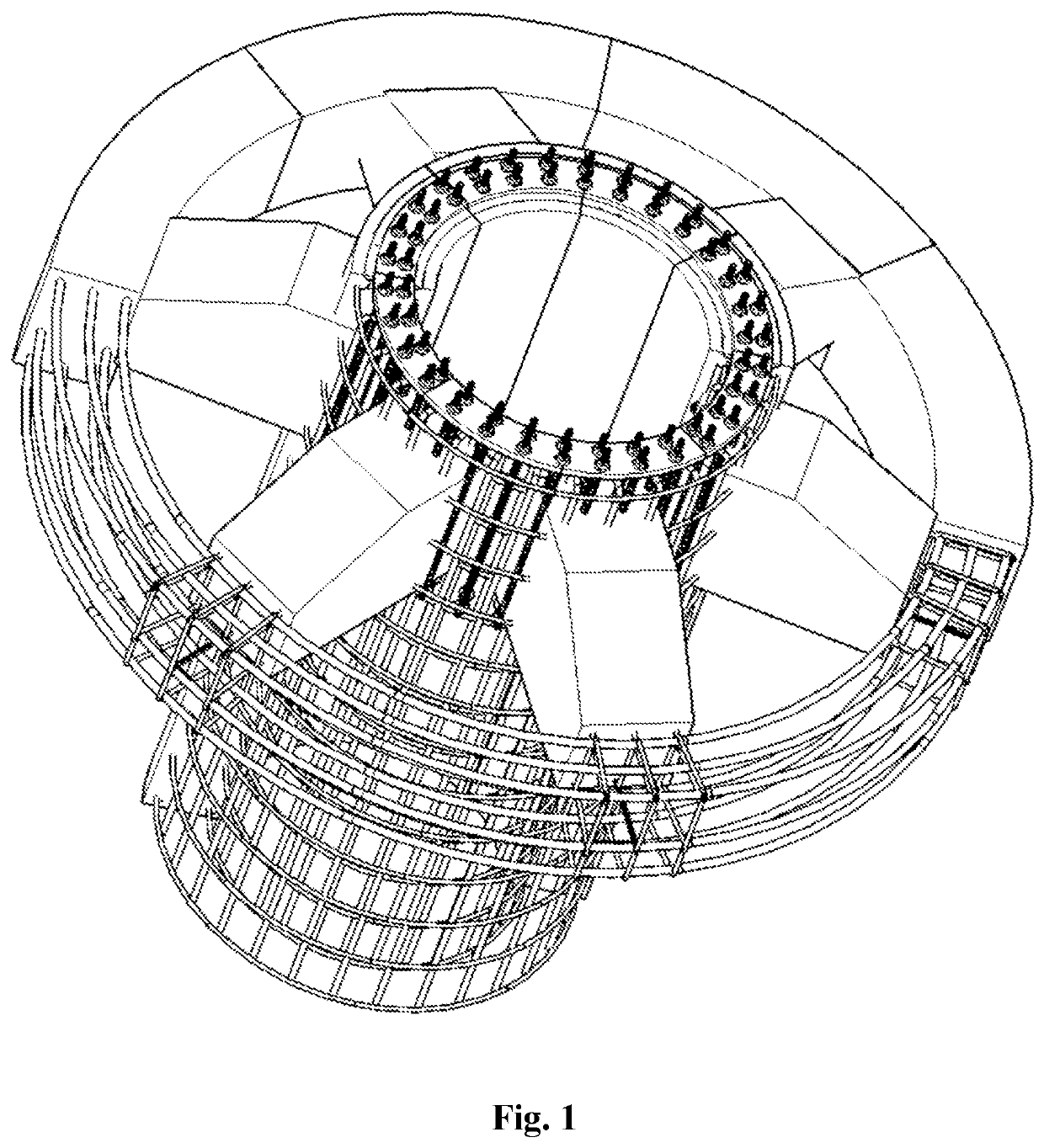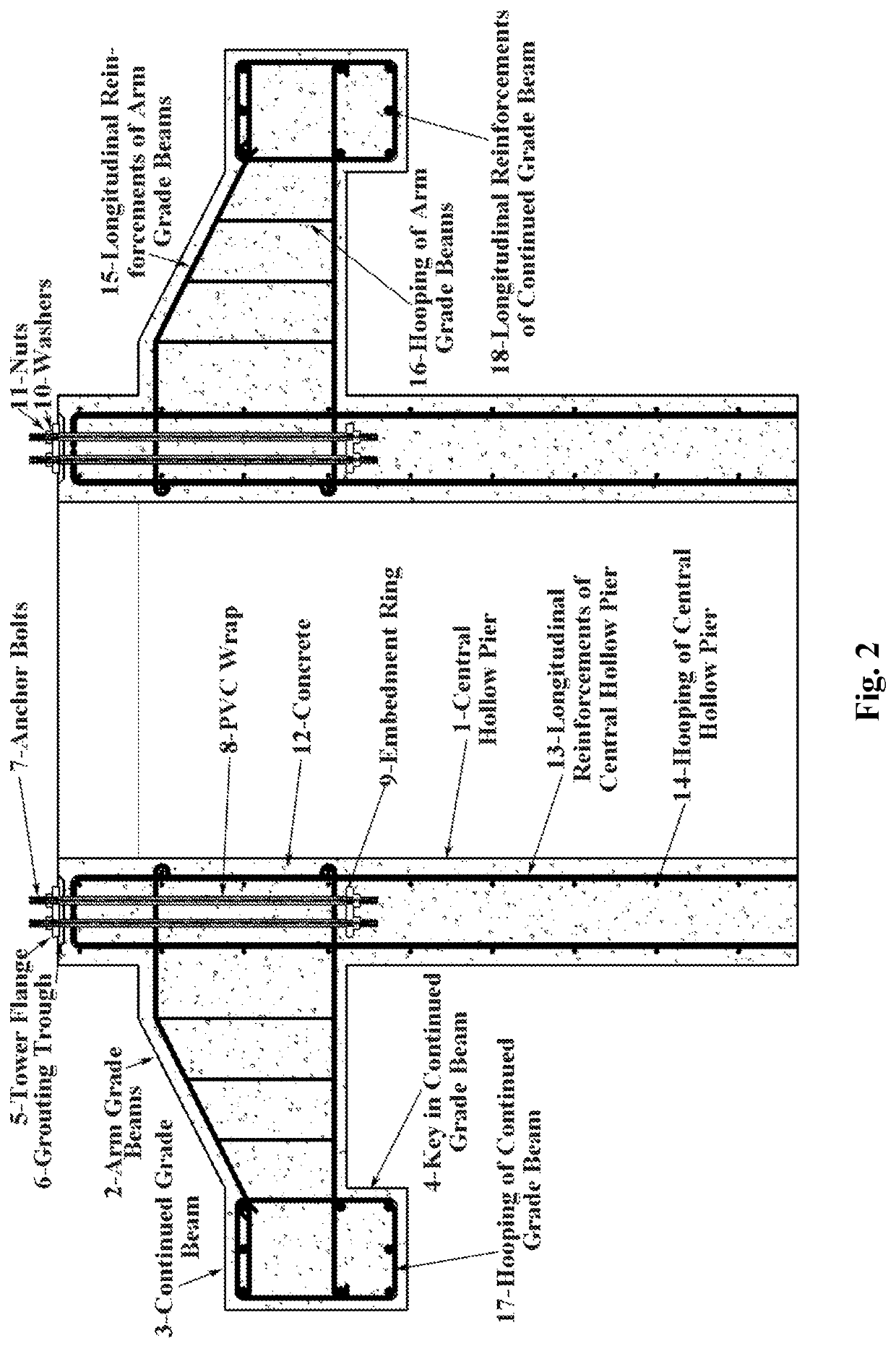Tubular foundation for onshore wind turbine generators
a technology for wind turbine generators and tubular foundations, which is applied in the direction of foundation engineering, wind motor supports/mounts, construction, etc., can solve the problems of stiffness, structure would be difficult to transport to wind farm sites, and the foundation cannot support light superstructures, etc., to save construction time, simplify construction procedures, and improve construction accuracy
- Summary
- Abstract
- Description
- Claims
- Application Information
AI Technical Summary
Benefits of technology
Problems solved by technology
Method used
Image
Examples
Embodiment Construction
[0069]Referring specifically to the drawings, FIG. 1 is a 3-D illustration for the present foundation, and FIG. 2 designates the top plan view of the invented foundation. FIGS. 2 to 8 show the details for the foundation. FIG. 2 designates a vertical sectional view of the foundation, the numerals in FIG. 2 show that the foundation comprises four major structural members, central hollow pier 1, arm grade beams 2, continued grade beam 3, and continued shear key 4 built below the continued grade beam 3. The configuration of the central hollow pier 1 matches the tower base flange 5, which is also shown on FIGS. 1 and 2. The inner and outer diameters of the central hollow pier 1 typically range from 10 feet to 16 feet for wind turbine generator foundation to accommodate the base flange 5 which sits in the grouting trough 6 shown in FIG. 2. The grouting trough 6 is constructed as a groove on the top of the central hollow pier 1. The depth of the grouting trough 6 typically ranges 2 to 5 in...
PUM
 Login to View More
Login to View More Abstract
Description
Claims
Application Information
 Login to View More
Login to View More - Generate Ideas
- Intellectual Property
- Life Sciences
- Materials
- Tech Scout
- Unparalleled Data Quality
- Higher Quality Content
- 60% Fewer Hallucinations
Browse by: Latest US Patents, China's latest patents, Technical Efficacy Thesaurus, Application Domain, Technology Topic, Popular Technical Reports.
© 2025 PatSnap. All rights reserved.Legal|Privacy policy|Modern Slavery Act Transparency Statement|Sitemap|About US| Contact US: help@patsnap.com



